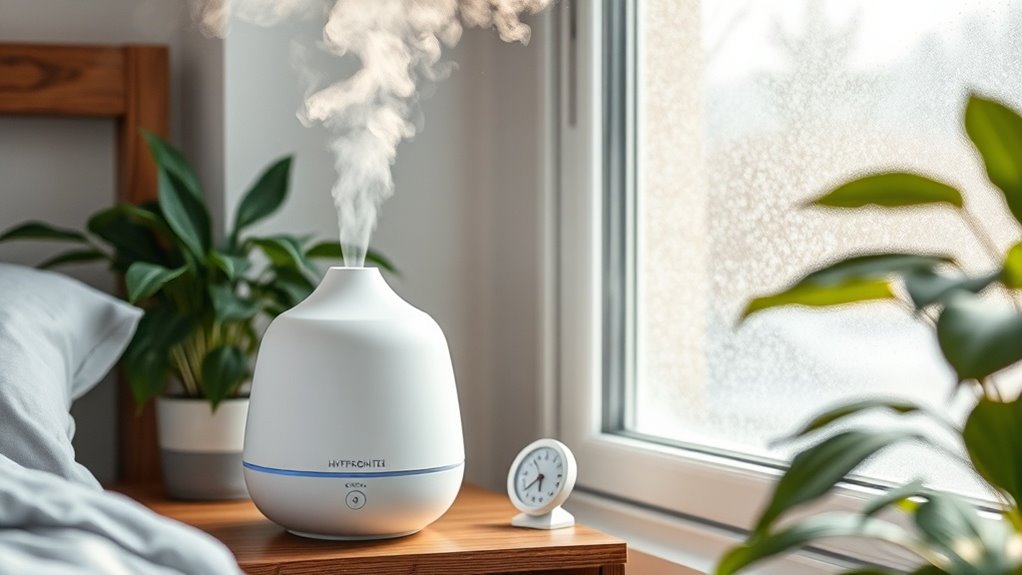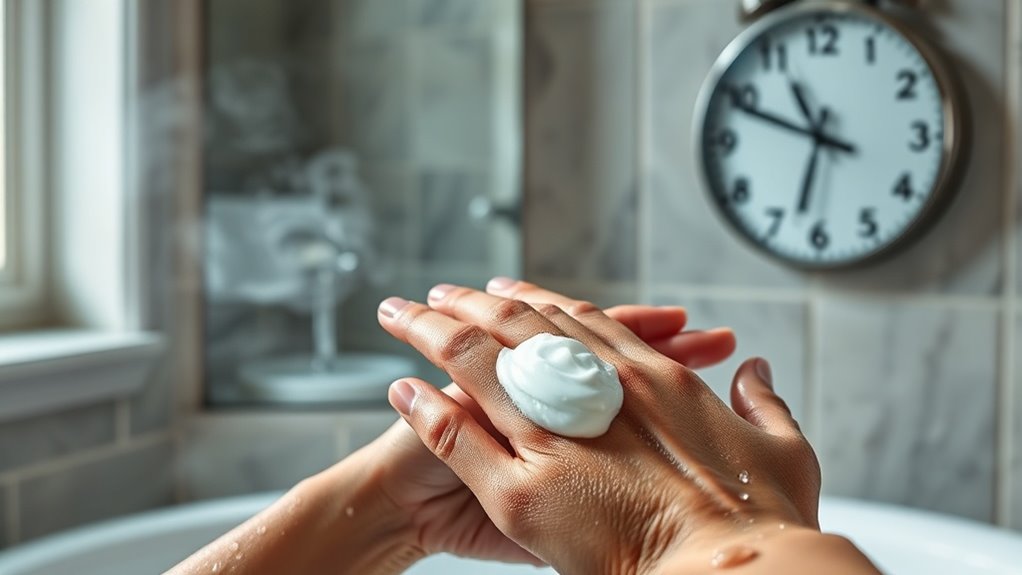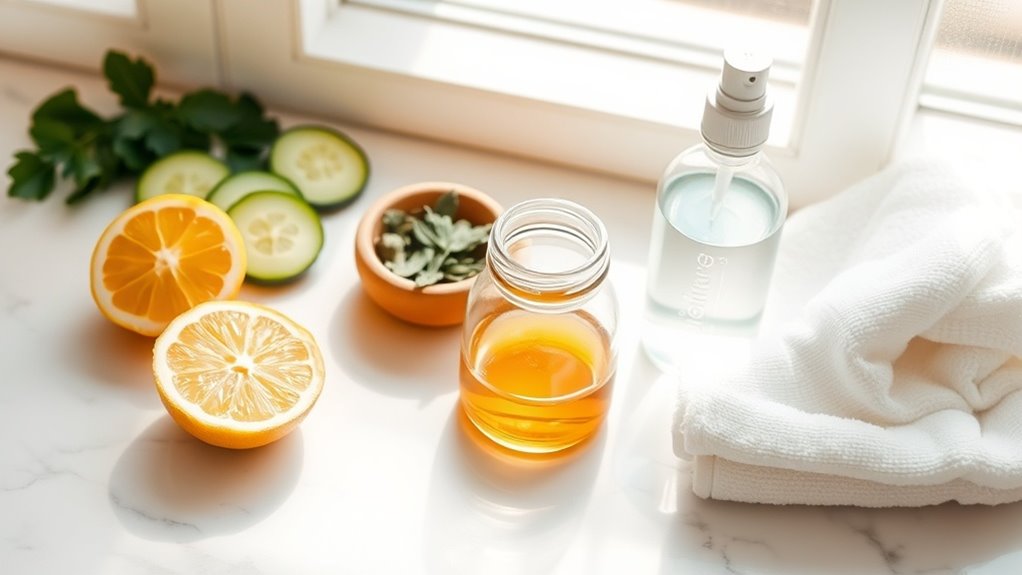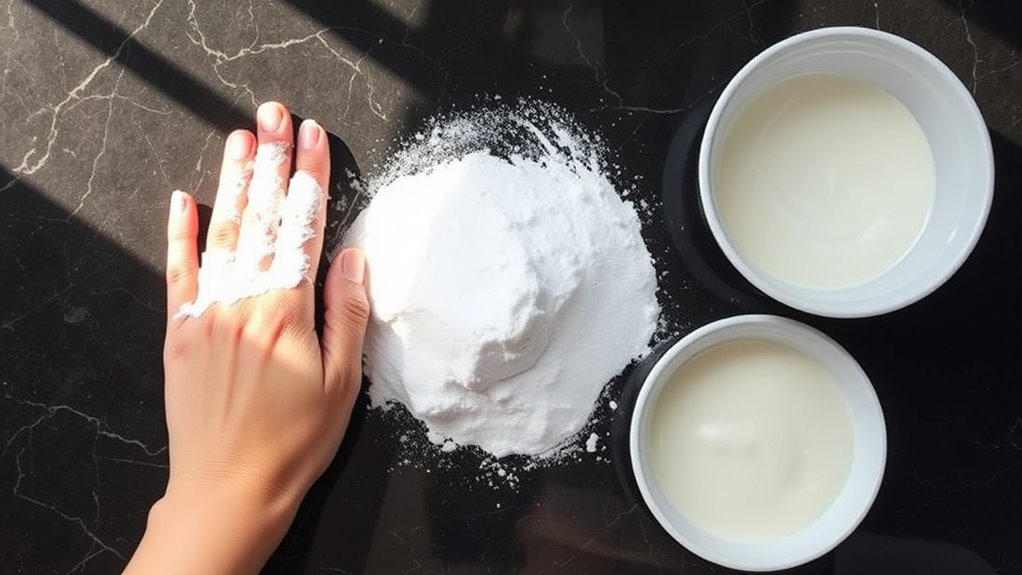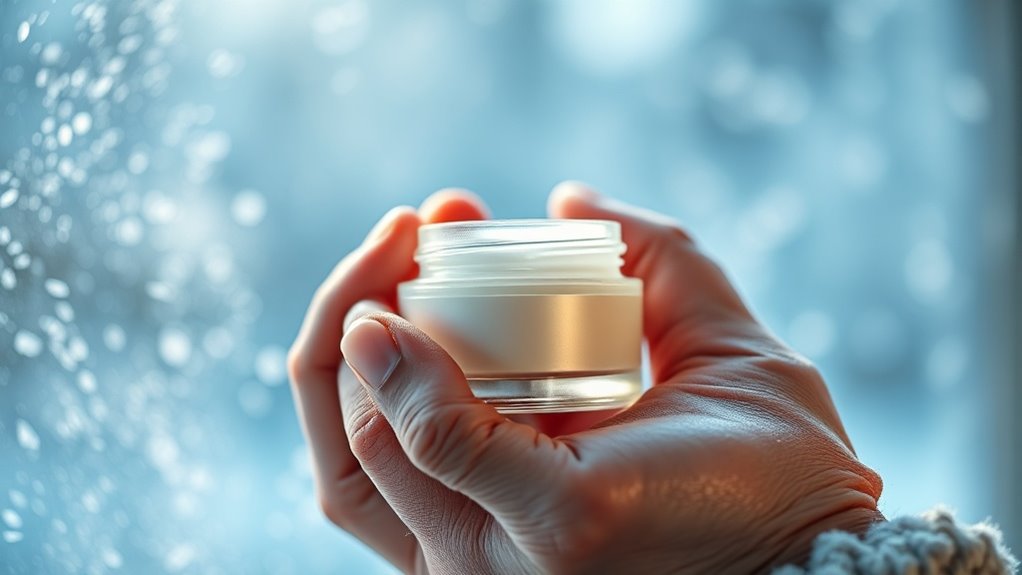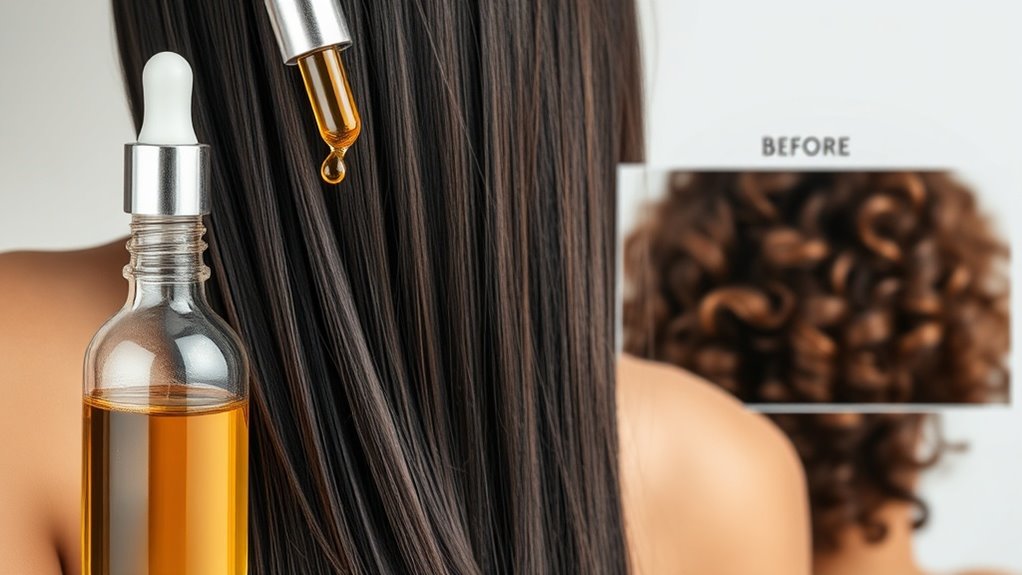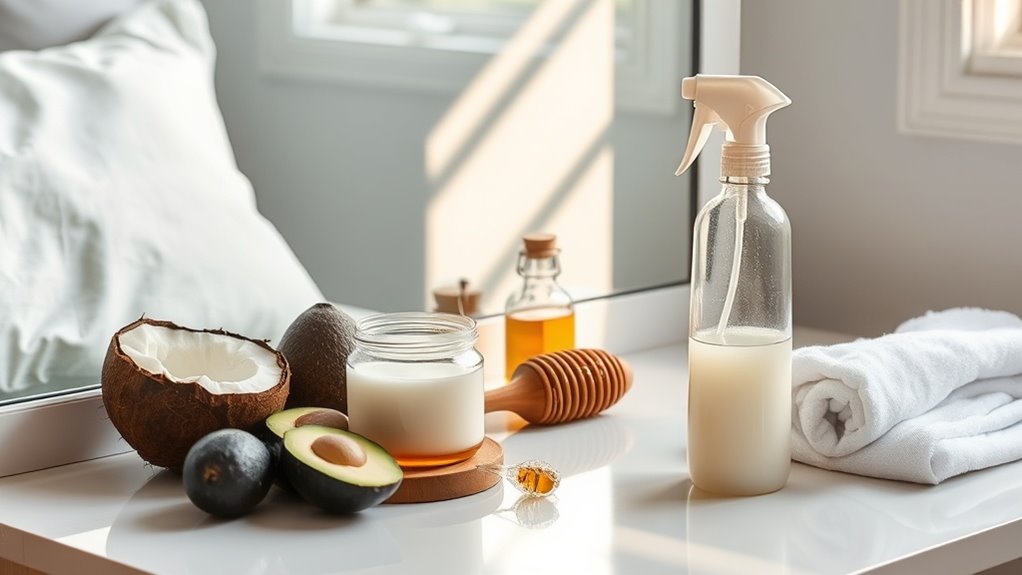7 Ways to Prevent Dry Skin During Indoor Heating Season
You turn on the heat, get cozy, and within days your skin feels like sandpaper—tight, flaky, and impossible to soothe no matter how much lotion you slather on. The good news? You can prevent winter skin dryness with seven simple adjustments that take less than 10 minutes to implement and work within 24 hours. These aren’t complicated spa treatments or expensive products—just practical tweaks to your daily routine that may help lock in moisture even when your heater’s running full blast. Let me save you from another season of itchy, uncomfortable skin with methods that actually deliver results.
Optimize Indoor Humidity Levels With Strategic Humidifier Placement
When indoor heating systems kick into high gear, they’ll strip moisture from the air and leave your skin parched and uncomfortable. You’ll need to maintain 40-50% humidity levels for effective dry skin care.
Position humidifiers in rooms where you spend most time, especially your bedroom. Place them on elevated surfaces at least three feet from walls to maximize air circulation. Keep them away from electronics and wood furniture to prevent damage.
Clean your humidifier weekly to avoid bacteria buildup. Monitor humidity with a hygrometer, as excess moisture can trigger mold growth and respiratory issues. This optimal humidity range works synergistically with moisturizer application to strengthen your skin’s natural barrier against dryness.
Switch to Gentle, Hydrating Cleansing Products and Techniques
Your humidifier works hard to add moisture back into the air, but harsh soaps and cleansers will undo that effort by stripping away your skin’s natural protective oils. Choose fragrance-free, cream-based cleansers with ceramides or hyaluronic acid that maintain your skin barrier.
Skip hot showers—lukewarm water prevents excessive drying. Limit bathing to ten minutes and pat yourself dry instead of rubbing vigorously. Apply moisturizer within three minutes of washing while your skin’s still damp to lock in hydration.
Consider cleansing your face just once daily during winter months, using only water in the morning if you’re not oily. When layering skincare products, apply them from thinnest to thickest consistency and wait 30 seconds between applications to allow proper product absorption.
Apply Moisturizer Within the Critical 3-Minute Window
Dermatologists call this the “3-minute rule,” and it’s backed by science: moisture applied to damp skin traps up to ten times more hydration than product smoothed onto completely dry skin. After washing your face or showering, pat yourself semi-dry with a towel, leaving skin slightly moist. Immediately apply your moisturizer while your pores remain open and receptive. This timing creates an occlusive barrier that seals in water your skin absorbed during cleansing.
Set a timer if needed—once three minutes pass, your skin’s moisture begins evaporating rapidly, especially in heated indoor air, diminishing your moisturizer’s effectiveness significantly. Look for products containing hyaluronic acid, which can hold up to 1,000 times its weight in water to maximize hydration during this critical window.
Increase Daily Water Intake to Support Skin Hydration From Within
While topical moisturizers work from the outside, you’ll need to hydrate your skin from within by drinking enough water throughout the day.
You should aim for at least 8 glasses of water daily, though your individual needs may vary based on activity level and climate.
Beyond plain water, you can also boost hydration through water-rich foods like cucumbers, watermelon, and citrus fruits, as well as herbal teas and broths.
Just as consistent daily hydration helps alleviate digestive issues, maintaining adequate fluid intake supports skin elasticity and prevents the dryness that indoor heating can cause.
Optimal Daily Water Amount
The connection between water consumption and skin moisture runs deeper than many people realize. Your body needs adequate hydration to maintain skin elasticity and barrier function, especially when indoor heating depletes moisture from the air.
Daily water intake guidelines:
- General recommendation: Consume 8-10 glasses (64-80 ounces) daily, adjusting for activity level and climate
- Monitor your hydration: Check urine color—pale yellow indicates proper hydration
- Distribute throughout the day: Drink consistently rather than large amounts at once for better absorption
Hydrating Foods and Beverages
Beyond plain water, incorporating moisture-rich foods into your diet provides dual benefits—essential nutrients alongside hydration that supports your skin’s health. Cucumbers, watermelon, and celery contain over 90% water content while delivering vitamins and antioxidants. Citrus fruits offer vitamin C, which supports collagen production for skin elasticity.
You’ll find herbal teas, broths, and coconut water serve as excellent hydrating alternatives to plain water. Fatty fish like salmon provides omega-3 fatty acids that strengthen your skin’s moisture barrier. Leafy greens such as spinach contribute both hydration and skin-protective nutrients, helping combat indoor heating’s drying effects.
Wear Protective Clothing and Fabrics to Shield Skin From Dry Air
Your clothing choices directly impact how well your skin retains moisture during heating season. Natural fabrics like cotton, silk, and bamboo allow your skin to breathe while providing a barrier against dry indoor air.
Strategic layering lets you regulate your body temperature without overheating, which can further dehydrate your skin. Consider sleeping on silk or satin pillowcases to reduce friction-induced damage to both your skin and hair while you rest.
Choose Natural Breathable Fabrics
When indoor heating systems strip moisture from the air, your clothing choices become your first line of defense against dry, irritated skin. Synthetic materials trap heat and prevent proper air circulation, worsening moisture loss from your skin’s surface.
Opt for these natural, breathable fabrics:
- Cotton – Allows air circulation while absorbing excess moisture without irritating sensitive skin
- Silk – Provides smooth texture that won’t cause friction or inflammation on delicate areas
- Bamboo – Offers superior breathability and naturally wicks moisture away from your body
These materials help maintain your skin’s natural moisture balance throughout winter months.
Layer Clothing Strategically
While single-layer outfits might seem simpler, strategic layering creates insulating air pockets that protect your skin from heated indoor air’s drying effects. Start with a moisture-wicking base layer that draws perspiration away from your skin, preventing irritation. Add a breathable middle layer for insulation without trapping humidity against your body. Top with a lightweight outer layer you’ll easily remove when transitioning between temperatures.
This approach maintains consistent skin temperature, reducing stress that triggers moisture loss. You’ll avoid overheating indoors while keeping your skin shielded from dry air’s dehydrating impact throughout winter months.
Adjust Thermostat Settings to Minimize Moisture Loss
Indoor heating systems work overtime during cold months, but cranking your thermostat too high creates an arid environment that strips moisture from your skin.
Optimal temperature settings:
-
Set your thermostat between 68-72°F – This range maintains comfort while preventing excessive dryness that occurs at higher temperatures.
-
Lower nighttime temperatures to 65-68°F – You’ll sleep better in cooler conditions, and your skin won’t lose as much moisture overnight.
-
Use a programmable thermostat – Schedule temperature drops when you’re away or sleeping to reduce continuous exposure to heated air.
These adjustments protect your skin’s natural barrier while keeping you comfortable. Just as you should monitor feet regularly for changes in skin texture, temperature, or color during seasonal transitions, check other exposed areas like hands and face for early signs of dryness that heating systems can cause.
Implement Intensive Overnight Skin Barrier Repair Treatments
Since your skin undergoes its most active regeneration while you sleep, nighttime provides the perfect window for intensive moisture repair. Apply a thick, occlusive moisturizer containing ceramides, hyaluronic acid, or petrolatum before bed to seal in hydration.
Layer a hydrating serum underneath for enhanced penetration. Consider using a humidifier in your bedroom to maintain optimal moisture levels while you rest.
For extremely dry areas like hands and feet, apply heavy cream and wear cotton gloves or socks overnight. This creates a microclimate that accelerates barrier repair, letting you wake with noticeably softer, more resilient skin.


